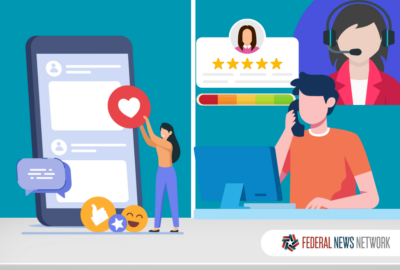Two’s a couple, three’s a family!
Whether your family consists of just a husband or you have 18 dependents, a family is a family as far as Uncle Sam is concerned. And that ticks off couples who...
Although I have no scientific data to back this up, my feeling is that the percentage of people — federal or private sector — who like/appreciate their health plan is about the same as those of us who are happy that they are going bald, developing a paunch or have visible purplish bags under their eyes.
Although the Federal Employee Health Benefits Program is the envy of the nonfederal nation, many government workers and retirees think the plans don’t cover enough (as in dental) and cost too much.
One of the most common complaints about the FEHBP is that it offers just two options: Self-only or family. In the government, as with many (maybe most) other company-sponsored health programs, a family is two or more people. Period. Whether a couple has one child or 26 children, that is defined as a family. Family premiums (but not out-of-pocket costs) are the same regardless of the size of the family. A lot of couples without kids say it is wrong to charge them family premiums.
Many feds and retirees think it is unfair, and stupid, that the government doesn’t offer another option: Self plus-one. Retiree Richard T. Wagner is one of many. He says:
“I (and others I know) would like to see a health-insurance plan offered that is for the insured plus one, like the vision and dental plans offer. My family consists of me and my wife. We don’t have children in the house. This plan would be great for us and a lot of other retirees.
I realize the insurance companies don’t like that idea because they are making a mint off of us, when we have to go with a family plan.
But it turns out there are other reasons. We put the question to David Snell, director of retirement benefits for the National Active and Retired Federal Employees. I recalled asking him about this before. My recollection is that he said it had been studied and considered many times, and each time it was decided that it would adversely impact the entire FEHBP — and premiums — if there was a self-plus (two-person) option.
Here’s his response:
We’ve had this question before and your memory serves you correctly. First, the FEHBP law would have to be amended to provide for a Self Plus One enrollment as an enrollment option for health plans. The federal dental and vision plans allow such an option mainly because the enrollee pays the entire premium — there is no government share. As you recall correctly, such an enrollment category would probably be most populated by the older retirees in the program who are very expensive to cover now. Such adverse selection would more than likely cause premiums to increase at a higher rate than the current family enrollment, where the risks are spread out over the entire federal population including the younger, healthier and therefore cheaper-to-cover pool of enrollees.”
So don’t look for a self-plus option anytime in the future.
NEARLY USELESS FACTOID
By Jack Moore
Several early 20th-century childcare books recommended parents bathe their newborn babies in lard, olive oil or fresh butter.
(Source: Slate)
MORE FROM FEDERAL NEWS RADIO
New TSP rules help Hurricane Sandy victims
Hurricane Sandy victims who take a hardship withdrawal can continue to contribute to their Thrift Savings Plan. The Federal Retirement Thrift Investment Board will waive a rule that prevents contributions for six months after taking a hardship withdrawal.
OPM survey: Tight budgets, pay freeze ‘taking toll’ on employee satisfaction
Employee satisfaction across the federal government is sagging, according to the 2012 Employee Viewpoint Survey released by the Office of Personnel Management Wednesday. While there weren’t any drastic drops, scores governmentwide were down in every major measure, including employees’ satisfaction with their jobs, supervisors and pay.
Werfel: Gov’t avoids $47B in overpayments
The federal government avoided making $47 billion in overpayments over the last three years. In addition, the governmentwide error rate dropped from a high 5.4 percent in Fiscal Year 2009 to 4.3 percent in FY2012. Adding in the number of improper payments avoided during the same three-year period by the Department of Defense in commercial contracts, the overpayment savings rise to $70 billion and the governmentwide error rate sinks to 3.7 percent.
Copyright © 2025 Federal News Network. All rights reserved. This website is not intended for users located within the European Economic Area.
Mike Causey is senior correspondent for Federal News Network and writes his daily Federal Report column on federal employees’ pay, benefits and retirement.
Follow @mcauseyWFED






